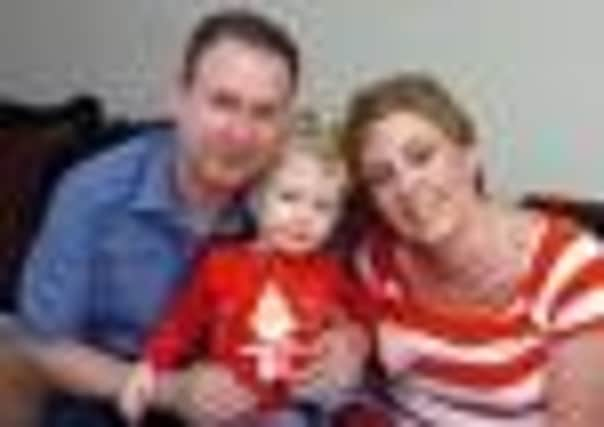I lost 12 stone and gained bundle of joy


That was to be a mother.
So she was devastated when, after trying for 11 years, she discovered she couldn’t conceive.
Lisa had an issue with fallopian tubes and her husband Julian also had a problem with his sperm.


Advertisement
Hide AdAdvertisement
Hide AdAnd weighing at 24 stone Lisa - now 35 years old - was too big too qualify for IVF so, determined to get pregnant, she lost 12 stone through a gastric bypass, a surgical operation where doctors divide the stomach into sections, reducing its capacity.
“I was always a big girl,” says Lisa, from Sprotbrough, Doncaster. “I was 18 stone when I met Julian, but the weight meant I couldn’t qualify for IVF - I had to get my body mass index (BMI) down.”
“The gastric bypass operation was horrendous and it’s irreversible. But once I’d had it and lost the weight I was straight on the phone to the gynaecologist asking about IVF.”
She had her first round of IVF treatment in 2007, but it proved unsuccessful.
Advertisement
Hide AdAdvertisement
Hide Ad“The treatment lasted five months - but nobody tells you about the emotions you experience when it doesn’t work.
“I was devastated. You put all your hopes into this and you think ‘it’s okay, we’ll have a baby at the end of this’ and then it doesn’t work.”
By this stage, many of Lisa’s friends had their own children, but that didn’t bother her. “What used to get me down is seeing all these people on the Jeremy Kyle Show with all these kids they don’t even care about and yet we were fully able to support a child and provide a loving home, but were unable to conceive.”
“I had counselling after the first round failed but the doctor said to me ‘it’s not a problem - we can do it again.” Indeed she did. And it worked. But it wasn’t easy.
Advertisement
Hide AdAdvertisement
Hide Ad“The drugs make you really emotional - they don’t warn you about that. Your hormones are all over the place,” she said.
“Going through IVF is a million times worse than PMT - it’s like a million periods injected into you at once.”
IVF fertilises sperm and eggs in a laboratory before the resulting embryo is transferred to the womb.
The woman takes fertility drugs to stimulate her egg production and once these mature they’re collected by a doctor, who uses ultrasound to guide the collecting tube.
Advertisement
Hide AdAdvertisement
Hide AdThe man gives a sperm sample, which is put in with the eggs to see if fertilisation takes place. If both become fertilised and a healthy embryo develops, they insert the embryo into the womb using a fine needle.
“It is horrendous. The needle’s huge and they say the pain is no worse than a period but it was obviously a man who said that because it’s a lot worse.”
Lisa was funded through the NHS for her IVF treatment, which she received at Care fertility clinic in Sheffield. Care hold contracts to NHS patients who - like Lisa - have been awarded funding for their treatment.
The organisation celebrates its 20th year in Sheffield next month, with an exhibition at the Millennium Galleries of parent’s mementos from their successful treatment, such as baby clothes and bibs.
Advertisement
Hide AdAdvertisement
Hide AdBut Lisa has her own, very poignant memorabilia from her successful, period - a positive pregnancy text from Mothers’ Day 2009. She gave birth to healthy 7lb 12oz Gracie later that same year.
Looking back on her IVF treatment, she says: “It was absolutely awful but for what I got from it I’d do it a million times over.”